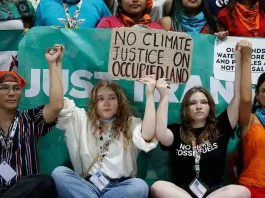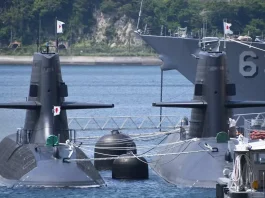
In a display of diplomatic pomp and economic maneuvering, Saudi Crown Prince Mohammed bin Salman arrived in Washington on November 18, 2025, for a high-stakes meeting with U.S. President Donald Trump. Amid military flyovers, red-carpet welcomes, and Oval Office handshakes, the visit sparked immediate speculation: Was this more than a state visit—a lavish shopping spree for American weaponry? With announcements of multibillion-dollar defense pacts and investment pledges topping $600 billion, the trip underscores a deepening U.S.-Saudi alliance. But beneath the fanfare lies a complex web of regional tensions, economic diversification, and military ambitions.
A Reset in U.S.-Saudi Ties
The crown prince’s itinerary was packed with symbolism and substance. Trump hosted bin Salman with elaborate gestures, including fighter jet flyovers and a black-tie dinner, signaling a thaw in relations strained by past controversies. Discussions focused on economic investments, energy cooperation, and—most prominently—defense. The White House highlighted Saudi Arabia’s expanded commitment to pour hundreds of billions into the U.S. economy, framing the visit as a cornerstone for mutual prosperity. Yet, whispers of “shopping” weren’t unfounded; the agenda brimmed with arms negotiations, positioning the trip as a pivotal moment for global security dynamics.
How Many Defense Items Did Saudi Arabia Secure?
At the heart of the visit was the signing of the U.S.-Saudi Strategic Defense Agreement (SDA), a landmark pact aimed at fortifying Saudi military capabilities. While exact figures on every item remain fluid amid ongoing negotiations, several high-value procurements emerged as immediate highlights.
- Abrams Tanks: Saudi Arabia committed to acquiring nearly 300 M1A2 Abrams main battle tanks, valued at an estimated $4-5 billion. These upgrades will enhance Riyadh’s armored forces, incorporating advanced fire control systems and improved survivability features for desert warfare.
- F-35 Stealth Fighter Jets: In a bold move, Trump greenlit the sale of F-35 Lightning II jets to Saudi Arabia—the kingdom’s first access to fifth-generation stealth aircraft. Details point to an initial batch of 50-100 units, potentially worth $10-15 billion over the next decade. The jets promise superior air dominance with integrated sensors, network-centric warfare tools, and low-observable technology, though delivery timelines hinge on congressional approval.
- Broader Defense Package: The SDA encompasses additional systems, including Patriot missile interceptors, THAAD anti-ballistic defenses, and precision-guided munitions. Overall, these deals could total $20-30 billion in the short term, with ancillary support like training simulators and logistics hubs.
These aren’t isolated buys; they build on Saudi Arabia’s status as the world’s largest importer of U.S. arms, accounting for over 11% of American defense exports in recent years. The 2025 agreements reflect a tailored strategy to modernize Saudi forces while fostering joint production ventures.
Does the US See Saudi Arabia as a Premier Defense Buyer?
Absolutely—and the sentiment runs deep in Washington. Saudi Arabia isn’t just a client; it’s a linchpin in the U.S. arms ecosystem, consistently ranking as the top foreign purchaser of American weaponry. From 2013-2017 alone, Riyadh imported $112 billion in U.S. systems, a trend that accelerated under Vision 2030’s spending surge.
U.S. policymakers view these transactions as a dual win: They inject billions into domestic defense contractors, bolstering jobs in states like Texas and California, while securing a reliable ally in a volatile region. Trump’s administration has amplified this narrative, touting the F-35 deal as a “game-changer” for bilateral ties. Critics within the defense establishment have flagged risks, such as technology proliferation, but the economic allure often prevails—Saudi purchases sustain production lines for systems like the Abrams and Patriot.
Strategically, the U.S. leverages these sales to influence Saudi behavior, withholding or expediting deliveries to align with foreign policy goals. In 2025, this dynamic positions Riyadh as an indispensable partner, with deals like the SDA ensuring long-term interoperability between U.S. and Saudi forces.
Why Is Saudi Arabia Rampant in Boosting Defense Capabilities?
Saudi Arabia’s military expansion isn’t impulsive; it’s a calculated pivot under Crown Prince Mohammed bin Salman’s Vision 2030 blueprint. With defense spending hitting $78 billion in 2025—a 6% year-over-year increase—Riyadh is channeling funds into both imports and homegrown innovation.
Localization and Industrial Ambition
A core driver is localization: The kingdom aims to manufacture 50% of its military needs domestically by 2030, up from 24.89% in late 2025. This includes forging partnerships for tech transfers in AI, quantum computing, and unmanned systems. Recent memorandums with global firms target joint ventures in drone production and cybersecurity, reducing reliance on imports while creating thousands of high-tech jobs. The General Authority for Military Industries (GAMI) oversees this shift, emphasizing self-sufficiency to diversify beyond oil revenues.
Regional Pressures and Deterrence
Beyond economics, escalating threats demand a robust posture. Houthi drone attacks on oil infrastructure, cyber incursions, and proxy conflicts have exposed vulnerabilities, prompting investments in layered air defenses and rapid-response units. By 2034, the defense market is projected to grow at a 3.7% CAGR, fueled by needs for expeditionary forces capable of multi-domain operations. This buildup isn’t about aggression but resilience—ensuring Saudi Arabia can project power without constant external aid.
A Tense Geopolitical Landscape
In the Middle East’s chessboard, Saudi Arabia navigates a minefield of rivals, with Iran topping the list as the perennial adversary. Tehran’s support for Houthi rebels in Yemen has fueled cross-border strikes, while its nuclear ambitions and ballistic missile program heighten existential fears. Riyadh’s recent defense pact with Pakistan—signed in October 2025—explicitly counters Iranian influence, blending economic ties with mutual deterrence against shared foes.
Other flashpoints include:
- Yemeni Houthis and Proxies: Backed by Iran, these groups have targeted Saudi energy assets, necessitating advanced interceptors like those in the new U.S. deals.
- Israel: Despite normalization talks, Israel’s 2025 strikes on Iranian targets have rattled Gulf states, alienating potential Arab allies and raising spillover risks. Saudi concerns over an “unrestrained” Israel underscore this friction.
- Turkey and Qatar: Ideological clashes, particularly over Islamist groups, position Ankara as a wildcard, with Riyadh wary of its expanding regional footprint.
- Broader Hedging: Saudi diplomacy now includes detente with Iran via Chinese mediation, but old enmities linger. The kingdom’s overtures to Pakistan also nod to indirect threats from India, though primarily as a counterweight to Tehran.
These dynamics explain the urgency behind the U.S. shopping list—arming against a spectrum of non-state actors, state rivals, and hybrid threats.
A Deal That Redefines Alliances
The Saudi prince’s 2025 U.S. visit transcended mere procurement; it was a strategic infusion of capital and firepower into a kingdom reshaping its destiny. As Riyadh fortifies against shadowy enemies and chases self-reliance, the U.S. reaps economic dividends from its star client. Yet, this “shopping trip” carries risks—proliferation concerns, regional arms races, and ethical debates over past uses of American hardware. In an era of flux, these pacts signal not just commerce, but a recalibrated balance of power. For businesses eyeing the $78 billion Saudi defense pie or analysts tracking Middle East stability, the coming years promise volatility—and opportunity.



